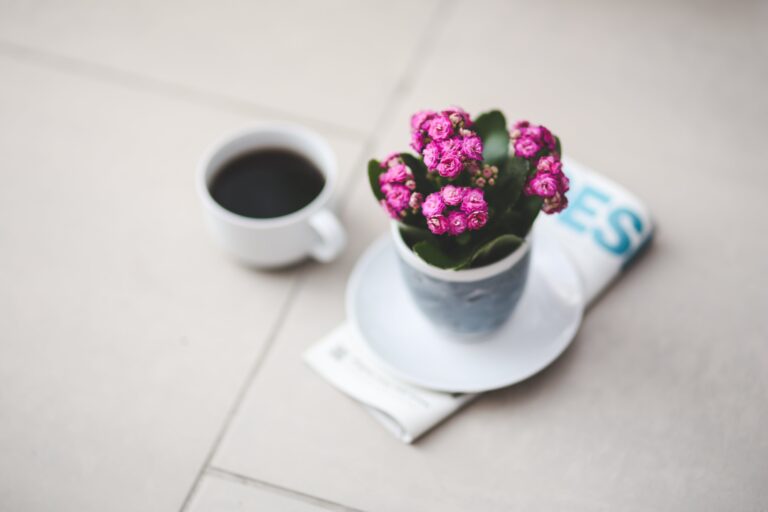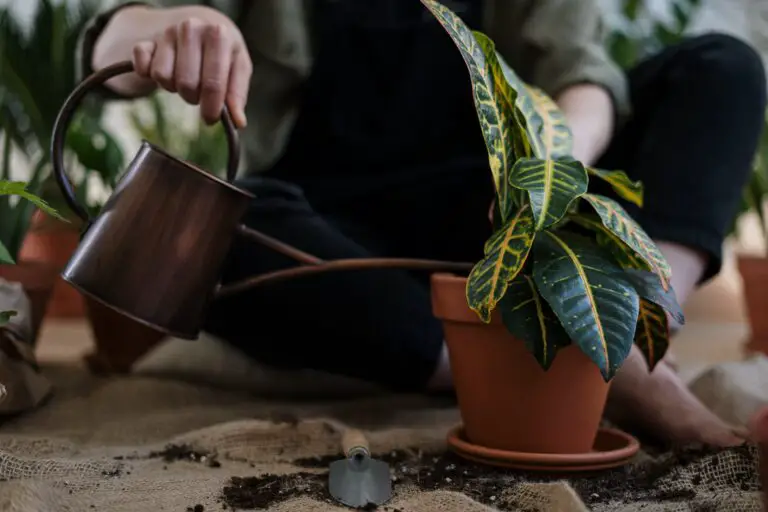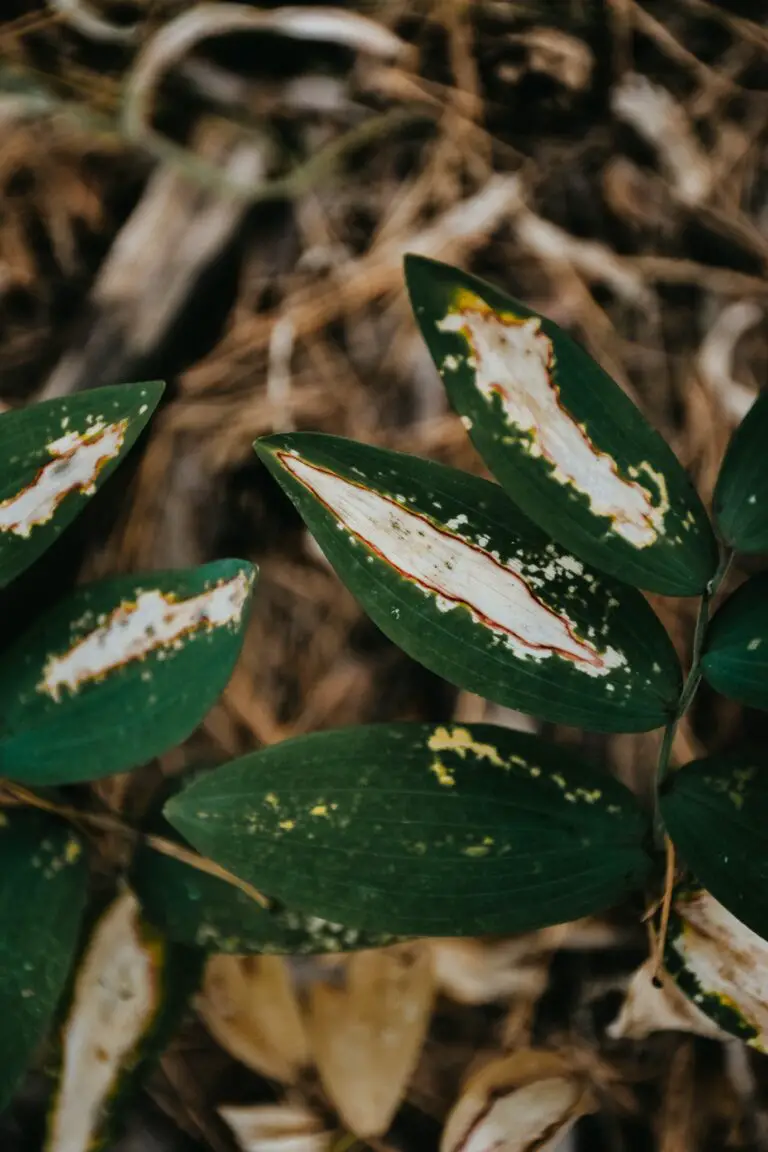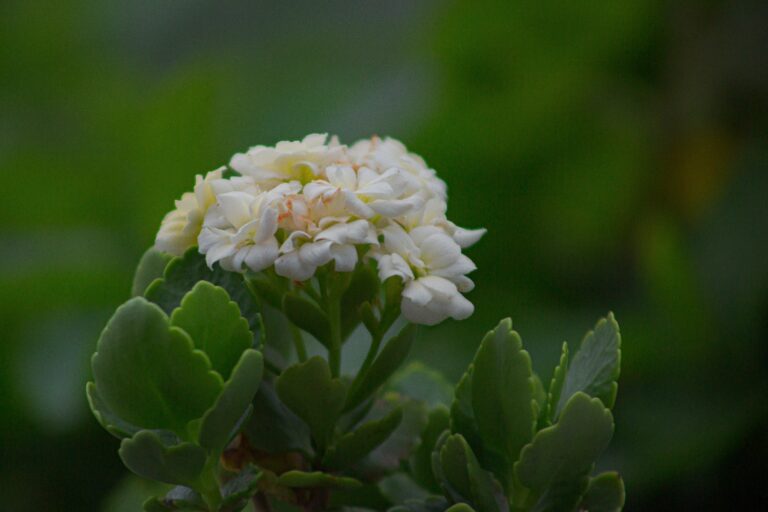Introduction to Kalanchoe Daigremontiana
Embark on a journey into the enchanting universe of Kalanchoe Daigremontiana, a botanical marvel that hails from the rugged terrains of Madagascar. Often crowned as the ‘Mother of Thousands’, this succulent plant is renowned for its unparalleled reproduction ability, effortlessly populating your garden with a legion of offspring. But what really is this proliferous plant, and why does it captivate the hearts of so many plant enthusiasts?
Imagine a lone, resilient plant thriving in the crevices of the Great Red Island, where other vegetation dares not root. This is the world of the alluring Kalanchoe Daigremontiana, a plant whose unique adaptation strategies carved a niche in one of the world’s most biodiverse landscapes. Its robust, fleshy leaves betray a hidden superpower – the edge of each leaf dotted with tiny plantlets ready to take root and multiply, earning its maternal moniker.
Its fascinating reproductive strategy is not just a spectacle but a masterclass in survival and efficiency. Each leaf is a self-sustaining nursery, equipped with miniature replicas of the mother plant, poised for independent life. This signature trait of Kalanchoe Daigremontiana isn’t merely for show; it signifies a complex ecological strategy that helps ensure the species’ continuity in the face of environmental challenges. To witness this spectacle in action, take a look at this informative video which delves into the intricacies of caring for this remarkable plant.
Amidst the myriad of houseplants one might choose, Kalanchoe Daigremontiana stands out with its easy-care demeanor and sculptural elegance. Its pointed, oblong leaves with jagged edges are more than mere appendages; they are a testament to nature’s ingenuity, each one a self-contained wonder of propagation.
For those uninitiated in the horticultural rites of this succulent, fear not. It’s remarkably undemanding, asking for little more than a sliver of sunlight and a sip of water to prosper. These adaptable wonders adapt to interior spaces with aplomb, harmonizing with eclectic decor or standing sentinel in minimalist abodes. Discover the essentials of nurturing this plant to its full glory with a comprehensive guide on its care.
Thus, as we peel back the layers of Kalanchoe Daigremontiana, it’s clear why this plant is not just a botanical specimen, but a storyteller, each leaf narrating tales of survival, adaptability, and the sheer force of life’s will to flourish.
Botanical Profile
Embark on an enlightening journey through the green world of Kalanchoe Daigremontiana, a remarkable succulent that’s as intriguing as it is charming. Our botanical profile unearths the secrets of this ‘Mother of Thousands,’ and what an extraordinary mother she is! Come along, let’s dig a little deeper into the fascinating world of this verdant marvel.
Taxonomy and Physiology: A Glimpse into Kalanchoe’s Green Kingdom
Hailing from the rugged landscapes of Madagascar, Kalanchoe Daigremontiana has adapted to thrive in arid environments, a testament to nature’s resilience. Taxonomically snug within the Crassulaceae family, this plant strikes an imposing figure with fleshy leaves that cradle life at their very edges. But what truly sets it apart is buried deep within its green-blue leaves, rich with an arsenal of chemical defenses and a storehouse of water, ensuring it endures where others would wither.
Picture a scene: the sun-drenched cliffs of Madagascar where the hearty Kalanchoe Daigremontiana, emerald sentinels, stand guard over a landscape that both challenges and embraces them. Here, they’ve refined their art of survival, perfected over eons.

Though often spotted flaunting clusters of bell-shaped flowers, it’s the green, slender leaves that steal the show. Edged with tiny plantlets poised for life, these leaves have rendered the conventional means of propagation almost redundant. Dive into Kalanchoe’s plant profile and you’ll be spellbound by the versatility and ingenuity of its reproductive strategy.
Understanding Kalanchoe’s Lifecycle: Growth Habits Unfolded
Imagine a solitary leaf fallen to the ground, a seemingly inconsequential event that teems with potential. Every leaf of Kalanchoe Daigremontiana is a harbinger of new life, equipped with tiny plantlets at its margins, poised to take root. As these miniature marvels detach and settle in the soil, a new generation sprouts, continuing the legacy of their parent in a cycle as predictable as it is enchanting.
In an isolated garden nook or a crevice of a rock wall, you could stumble upon a colony of Kalanchoe Daigremontiana, each one a clone of the next, a living, breathing testament to the wonders of vegetative reproduction. This unique method of procreation ensures survival and dispersion with an efficiency that would leave even the most industrious gardener in awe. Here lies the genius of the ‘Mother of Thousands’—a name that reflects not just abundance but the very essence of this plant’s spirit.
Now that you’ve brushed past the leafy curtains into Kalanchoe Daigremontiana’s inner sanctum, you’re privy to the secrets of its green dynasty. With each tiny plantlet, each robust leaf, and each silent struggle against the odds, this plant invites us to marvel at the endless ingenuity found in the quiet corners of the plant kingdom.
Ideal Growing Conditions
Welcome to the vibrant world of Kalanchoe Daigremontiana, affectionately known as the ‘Mother of Thousands.’ This succulent is not just known for its remarkable reproductive prowess but also for its resilience. However, to truly allow this green wonder to flourish, we must delve into its ideal environmental sweet spots—those just-right conditions that mimic its native Madagascar habitat.
Let There be Light
Imagine the bright, dappled sunlight of a Malagasy forest, filtering through the canopy. Your Kalanchoe Daigremontiana yearns for this kind of illumination! Bright, indirect light will keep its fleshy leaves supple and robust. Consider an east or west-facing window where the morning or afternoon sun visits but does not overwhelm.
Keeping it Comfy: Temperature Ranges
Now, let’s talk temperature. Picture a balmy day, with a gentle breeze—this is the sweet spot for our motherly plant. Aim for a cozy range between 60-85°F (15-29°C). Keep it away from chilly drafts and far from the icy kiss of winter windows. This plant is not a fan of the cold shoulder!
A Bit About Humidity
Moisture in the air is like an invisible hug for the Kalanchoe Daigremontiana. It thrives in moderate humidity levels, think of a day after a light rain, where the air is fresh but not heavy. A regular misting or a nearby pebble and water tray can provide this microclimate of moist merriment.
And now, to see these growing secrets in action, let’s take a peek at a helpful video that encapsulates the caring spirit needed to foster a thriving Kalanchoe Daigremontiana:
Remember, while this maternal marvel may seem self-sufficient with her abundance of baby plantlets, she relies on you to recreate the perfect balance of her native environment. Treat her well, and she’ll reward you with a bountiful brood of botanical beauty!
Soil and Watering Needs for Kalanchoe Daigremontiana
Unlock the full potential of your Kalanchoe Daigremontiana with the right ground game—yes, we’re talking soil mix mastery! A vibrant mix of ingredients makes all the difference. Imagine your favorite chocolate-chip cookie recipe, but instead of flour, sugar, and chocolate chips, we’ve got peat moss, perlite, and a pinch of sand. That’s your ticket to the perfect Kalanchoe crib!
Not to ruffle any feathers, but let’s set the record straight—overwatering is the plant’s arch-nemesis. Think of your Daigremontiana like a camel, storing water in those succulent leaves, ready to brave the desert. A sip here and there, let the topsoil dry out a touch, and you’ve struck gold. Waterlogged soil? Nope, not on our watch!
We’re aiming for a “Goldilocks” scenario—just the right balance. When it comes to quenching your Kalanchoe’s thirst, a gentle shower trumps a torrential downpour. Much like your leg day at the gym, consistency is key. Mark your calendar, set a reminder, do whatever it takes to remember when to water, and watch your green buddy flourish.
Drainage isn’t just some fancy term from a gardening show—it’s crucial. You wouldn’t slap on a swimsuit for a snowstorm, right? Well, your plant doesn’t want to sit in a puddle. That’s why a well-aerating soil that sends surplus water packing is your green guardian angel, ensuring your Kalanchoe avoids the dreaded, soggy-footed root rot.
Now, let’s put theory into practice. Here’s an action shot of our very own soil mix that’s sure to inspire your next potting session!

Keep these tips in your pocket, and you’ll be the reigning champion of the Kalanchoe Daigremontiana league. Here’s to no more sob stories about succulents lost to the abyss of overwatering!
Propagation Techniques
Welcome to the world of Kalanchoe Daigremontiana, commonly known as the ‘Mother of Thousands.’ The unique propagation method of this succulent makes it a fascinating plant to grow. If you’re eager to expand your succulent family, you’re in luck! We’re delving into the secrets of propagating these little wonders. No green thumbs required—just a little patience and the right know-how.
Starting Small: Plantlets in Action
Imagine giving life to a new plant without the fuss of seeds or cuttings. That’s exactly what Kalanchoe Daigremontiana plantlets are all about. These tiny replicas of the mother plant grow along the leaf margins, ready to take root and start their own journey. But how do you go from leaf to a thriving plant? Let’s explore.
First, gently pluck the plantlets from the mother leaf. Now, you may think it’s a straightforward process—and it is—but remember, the plantlets are delicate. Imagine you’re handling the smallest of precious gems, and you’ve got the right idea. Once they’re in your hands, it’s time for the next step: potting.

Potting Perfection
Choosing the right soil is crucial. What you need is a well-draining mix—think cactus potting soil or a blend with peat moss and perlite. The objective is to provide a cozy yet breathable space for the roots to explore. With your soil prepared, place the plantlets on top and gently press them in. They don’t need to be buried deep; just a light contact with the soil will do.
After potting, the waiting game begins. Water sparingly; over-enthusiasm with hydration could lead to damping off, a surefire way to turn your propagation dreams into mushy nightmares. The trick is to keep the soil slightly moist—imagine the light dew of an early morning, and you’ve got the perfect picture.
Nurturing New Growth
As your tiny plantlets start to take root, they’ll need all the love they can get. Position them in bright, indirect light—think of the golden glow of a late afternoon sun. Too much direct sunlight might be overwhelming, like a spotlight on a shy performer. And when it comes to feeding, a diluted dose of succulent fertilizer every now and then will do the trick. Think of it as a gentle nudge rather than a push, encouraging your plantlets to grow strong and beautiful.
In the grand scheme of things, nurturing Kalanchoe Daigremontiana plantlets is a journey filled with tiny steps and little victories. Plus, it’s a window into the resilience and ingenuity of nature—after all, what’s more miraculous than a plant engineer who clones itself without any hubbub? So go ahead, give propagation a try. And before you know it, you’ll have a vibrant, growing family of succulents, each with a tale of their own.
Common Pests and Diseases
Welcome to the battleground where your precious Kalanchoe daigremontiana, often hailed as the “Mother of Thousands,” faces its sneaky adversaries. In this corner, we uncover the nemesis of our succulent hero – pests and diseases that dare to blemish its beauty and hinder its growth. Let’s dive into the underbelly of the plant world and equip you with the know-how to protect your vibrant vegetative friend.
Meet the Marauders: Identifying Kalanchoe Culprits
Imagine waking up one morning to find your beloved Kalanchoe daigremontiana looking a tad off-color. A closer inspection reveals the ghastly sight of tiny brigands – aphids, mealybugs, and spider mites – having a feast at the expense of your plant’s vital juices. These common pests are not just mere irritants; they’re the vanguards of decline, capable of transforming your lush green haven into a withered wasteland.

Decoding Disease: Spotting the Silent Killers
It’s not just the creepy crawlies you need to watch out for. Diseases, those silent and invisible foes like powdery mildew and root rot, can stealthily usurp the health of your Kalanchoe daigremontiana. Symptoms might be subtle at first – a white dusting that appears almost decorative, or leaves that inexplicably yellow and wilt. But make no mistake, these are the red flags of a plant under siege.
Wielding the Shield: Prevention is the Best Defense
Now, let’s swivel from doom-and-gloom to empowerment – because knowledge is power, especially in gardening! Begin by putting up a strong defense for your Kalanchoe daigremontiana. Optimal sunlight, proper watering rituals, and good air circulation are akin to a fortifying elixir, enhancing your plant’s resilience against the onslaught of pests and pathogens.
Going on the Offensive: Treatment Tactics
When prevention isn’t enough, and the pests have breached the perimeter, it’s time to take up arms. Reach for insecticidal soaps, neem oil, or even DIY concoctions to show those bugs who’s boss. As for diseases, prune away the afflicted areas, adjust your watering regime, and ensure proper sanitation to halt the spread of the plant’s silent killers.
Regular monitoring of your Kalanchoe daigremontiana is crucial. Like a skilled gardener-commander, check the undersides of leaves and the nooks of stems for early signs of infestation. Early detection and swift action can mean the difference between a thriving botanical wonder and a cautionary tale of neglect.
In the end, your Kalanchoe daigremontiana is counting on you. With vigilance and a proactive stance, you can safeguard your “Mother of Thousands” against the devious foes that threaten its splendor, ensuring it continues to multiply and flourish under your watchful eye.
Practical Care Tips
The journey of nurturing a Kalanchoe Daigremontiana, affectionately known as the “Mother of Thousands,” is akin to unlocking the secrets of a botanic treasure chest. With each season’s turn, the plant reveals new aspects of its resilience and beauty. To ensure the Kalanchoe Daigremontiana thrives, there are several caretaking practices that one should take to heart.
Understanding Seasonal Adjustments
As the calendar pages flip, so should your care routine for the Kalanchoe Daigremontiana. During the vibrant growth of spring and summer, this succulent craves more sunlight and consistent watering to complement its energy. Imagine a balmy, sun-kissed morning, perfect for your green friend to bask in. However, as autumn whispers in and winter casts its chilly spell, reduce watering to mimic the plant’s natural habitat. It’s during this cooler repose that your Kalanchoe gathers its strength for another year of prolific growth.
The Finesse of Fertilization
Feeding your Mother of Thousands doesn’t need to be a complex affair. Fertilization should be viewed as a supplementary boost rather than a daily meal. Sprinkle a balanced, diluted solution into its soil every few weeks during the blooming phases—think of it as a vitamin shot that invigorates those majestic pink blooms popping against the emerald foliage. Less is more; overfertilization can lead to leggy growth, a situation akin to a lanky teenager outgrowing their wardrobe too quickly.
Pruning and Grooming: A Touch of Love
Pruning isn’t just about maintaining appearances; it’s about encouraging your Kalanchoe to present its most vibrant self. By snipping away the spent blooms or overgrown parts, you’re telling your plant to focus its energy on fresh growth. Envision this as giving your plant its own personalized spa treatment, refining its form and encouraging a lush, full-bodied presence. Regular grooming also involves removing the tiny plantlets that form on the leaf margins, which, left unchecked, can sap the parent plant of its vitality. Remember, a well-groomed Kalanchoe is a happy Kalanchoe.
In essence, consider the care of your Kalanchoe Daigremontiana as you would a cherished friendship—nurturing, attentive, and responsive to its needs. With these practical tips and a bit of patience, your Mother of Thousands will flourish, becoming a testament to your green thumb and loving care.
Landscaping and Design Uses
Are you ready to elevate your green space with a touch of the exotic? Let’s delve into the world of Kalanchoe Daigremontiana, also known as ‘Mother of Thousands,’ and unleash the full potential of this remarkable plant in your home or garden design.
Incorporating the Unique Appeal of Kalanchoe
The architectural structure of Kalanchoe Daigremontiana lends itself to modern and minimalist designs, standing out with its unique foliage and growth habit. Imagine this succulent as a focal point in a rock garden, its rosettes of leaves creating a verdant centerpiece that captivates the eye. Alternatively, place it against a backdrop of fine-textured plants, allowing its bold leaves to make a statement in contrast.
Companion Planting for a Harmonious Display
When selecting companion plants, consider those that complement the aesthetic and growing needs of your Kalanchoe. For a dynamic duo, pair it with purple heart (Tradescantia pallida), whose purple tones magnificently play off the green hues of the ‘Mother of Thousands.’ Additionally, adding a cascading element, like string of pearls (Senecio rowleyanus), creates layers of interest and depths in your design palette.
However, the true essence is in the details. Picture this succulent encircled by delicate groundcovers like thyme or creeping sedum; the contrast in form is not only visually striking but also beneficial, as these companions can help manage soil moisture and ward off pests.
Decorative Pots as a Style Statement
The choice of pot can transform Kalanchoe Daigremontiana into a statement piece. Opt for bold geometric pots to accentuate the plant’s architectural vibe, or consider a contrasting approach with colorful ceramic pots that exude character and charm. Arranging these potted beauties on tiered stands or among sculptural objects within your garden turns them into living artworks.
For indoor settings, envision a sleek windowsill lined with ‘Mother of Thousands’ in terracotta or concrete planters. Their earthy texture and natural tones will bring a touch of warmth and coziness to your interior decor.
Take a moment to get inspired by this engaging video, showcasing the artistic planting of Kalanchoe Daigremontiana and bringing to life the many possibilities it offers:
Remember, whether you’re looking to create a serene retreat or a vibrant focal point, Kalanchoe Daigremontiana offers endless opportunities for creativity in your landscaping and decor endeavors. Embrace its unique beauty and make it the jewel of your garden or interior design!
Environmental Impact and Safety of Kalanchoe Daigremontiana
In the lush world of houseplants, Kalanchoe daigremontiana, commonly known as the Mother of Thousands, captivates with its unique ability to sprout tiny plantlets along its leaf margins. However, behind its charming facade lies an ecological double agent with a penchant for invasion, especially in climates it effortlessly adapts to. This ardent survivalist isn’t content with being confined to pots and gardens; it escapes into the wild, often with unintended consequences.
Case in point: regions such as Hawaii and parts of Australia, where this seemingly innocent succulent has spread its roots far and wide, earning it a spot on the invasive species lists. Picture walking through a Hawaiian valley, expecting to find native flora and instead encountering vast swathes of Kalanchoe daigremontiana dominating the landscape. Its tenacious nature and rapid reproduction rate enable it to outcompete local vegetation, disrupting delicate ecosystems and diminishing biodiversity.
The Mother of Thousands is not just a concern for the environment; it’s also a safety hazard. This plant harbors a secret — it’s toxic! Both pets and humans can suffer adverse effects if they accidentally ingest its leaves. This is particularly concerning given its appealing appearance and easy accessibility to curious pets and children. Real-life examples highlight the importance of being vigilant with this plant at home, ensuring it doesn’t become a threat to your loved ones or the local fauna.
Understanding these risks, responsible cultivation and disposal of this plant are critical to prevent it from spreading into sensitive areas. It’s a reminder that even the most attractive plants can have a dark side when it comes to environmental impact. So, if you’re dazzled by the prolific propagation of Kalanchoe daigremontiana, just remember to keep it under control, watch out for its sly spread, and always safeguard those around you from its toxic touch.
For those interested in seeing the impact these plants can have and learning more about responsible gardening practices, here’s a video shedding light on the subject:
A Balancing Act: Conservation and Enjoyment
Enthusiasts of Kalanchoe daigremontiana must strike a balance between enjoying their botanical hobby and acting as stewards of the environment. By being informed, you can appreciate the Mother of Thousands in your home or garden, mitigating its environmental impact and ensuring the safety of those around you.
Frequently Asked Questions
Have you ever wondered how Kalanchoe Daigremontiana, also known as the Mother of Thousands, thrives in its unique way? Well, you’re not alone! Gardeners and plant lovers alike often find themselves curious about this fascinating succulent. So let’s dive into the greenery and unearth the answers to some of the most commonly pondered questions!
How Fast Does Kalanchoe Daigremontiana Grow?
Speed isn’t just for race cars; it’s a trait of our leafy friend too! Kalanchoe Daigremontiana is known for its brisk growth pace. Under the perfect conditions of bright, indirect light and just the right amount of water, it rockets upwards and outwards. Imagine, if you will, planting a tiny one, and within mere months, you’re gifted with a luscious, green spectacle—it’s almost like watching a nature documentary on fast forward!
Can It Be Grown Outdoors?
Kalanchoe Daigremontiana can indeed flourish under the open sky—provided the climate is as friendly as a Southern hostess. These sun worshippers love a day out in temperatures that would make others wilt, but beware of winter; it’s not their cup of tea. If Jack Frost is a frequent visitor where you live, it’s best to nestle these potted beauties indoors where they can stay cozy during the chilly months.
How Do You Handle the Plant’s Toxic Properties?
Though Kalanchoe Daigremontiana’s life-giving prowess is remarkable, caution is paramount due to its toxic nature. Like a superhero with a double edge, those miraculous leaves should be treated with respect. Keep them out of reach of curious critters and kids, and handle with care. Just think of it as keeping kryptonite safe—it’s all about the responsible guardianship of powerful things.


